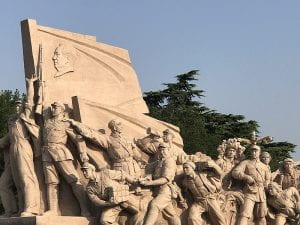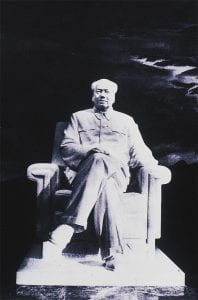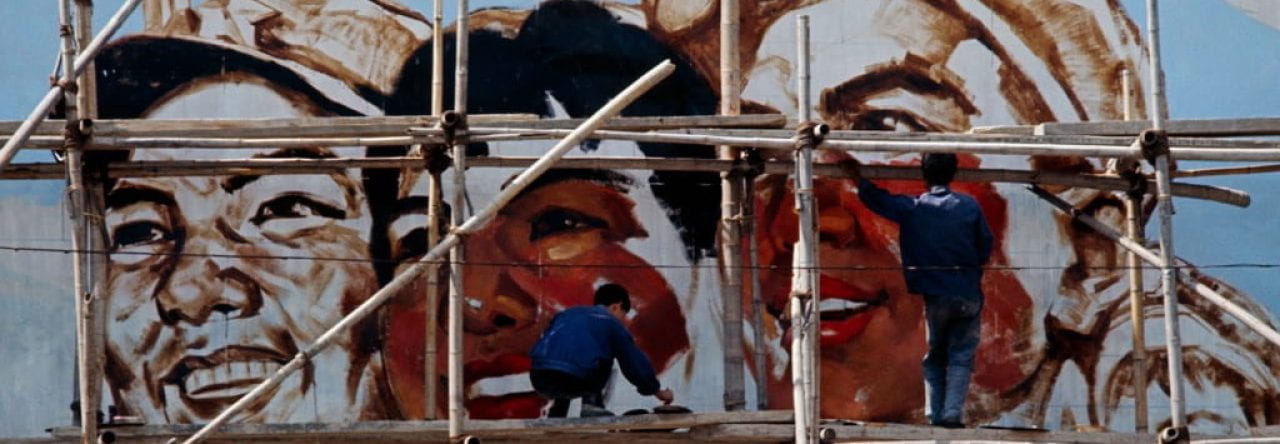Communism and monuments are inseparable. The Soviet Union has over a thousand monuments, and so did the Eastern bloc and North Korea. As a new member of the communist state, China did not become an exception either. These massive monuments, some of them going over 250ft, often depicted marshals and soldiers in World War II or proletarians fighting for their cause in a socialist revolt. Otherwise, it was mainly statues of Vladimir Lenin and Joseph Stalin that were being erected, in a style of socialist realism. China before being swallowed up by communist ideology was foreign to these European styles, but with the help of Hua Tianyou, the Chinese art scene were able to blend it with their own traditional Chinese style. This new European influenced avant-garde style took a big role in many monuments depicting the struggles of people during the revolution that are to be created. In this exhibition, I will focus on none other than Tiananmen Square, the beating heart of modern China and dive into the shift of its political significance from both the Chinese politburo and the people.
Consisting of Tiananmen, National Museum of China, Great Hall of the People, and Mao’s Mausoleum, the historic significance as well as political significance of the square is immense. And just like other Marxist-Leninist states, the government decorated Tiananmen Square with a number of monuments. The Monument to the People’s Heroes (Figure 1) is one of the highlights, in which is a monument to commemorate the fallen martyrs. With golden epitaph written in Mao’s calligraphy and eight different bas-reliefs portraying key events throughout the century of wars, it is a place where a person can feel history firsthand just by looking at it. Two sculptures stand in front of the Mausoleum of Mao Zedong (Figure 2), as well as Lincoln Memorial style Mao inside the mausoleum (Figure 3). The square was created to commemorate Mao’s accomplishments and became a mecca for mostly young Mao enthusiasts, but as time moved on, it slowly became a center for democratic movement, which started with the mourning of the death of Zhou Enlai, and later of Hu Yaobang. It eventually led to the student protests at the Tiananmen square in 1989. Over the course of 40 years, people on both sides believed in change for different reasons, and the monuments symbolized that in their respective ways.

Figure 1. The Monument to the People’s Heroes. Photograph by Chang-Tai Huang. Source: Mao’s New World, Figure 62

Figure 2. Statue outside Mao’s Mausoleum. Photograph by Jp16103. Source: Wikipedia Chairman Mao Memorial Hall

Figure 3. Statue of the Seated Mao Zedong. Photograph by Ye Yushan. Source: ancientarthistory
Works Cited:
Hung, Wu. “Tiananmen Square: A Political History of Monuments.” Representations, vol. 35, 1991, pp. 84–117, https://doi.org/10.2307/2928718.


Leave a Reply
You must be logged in to post a comment.